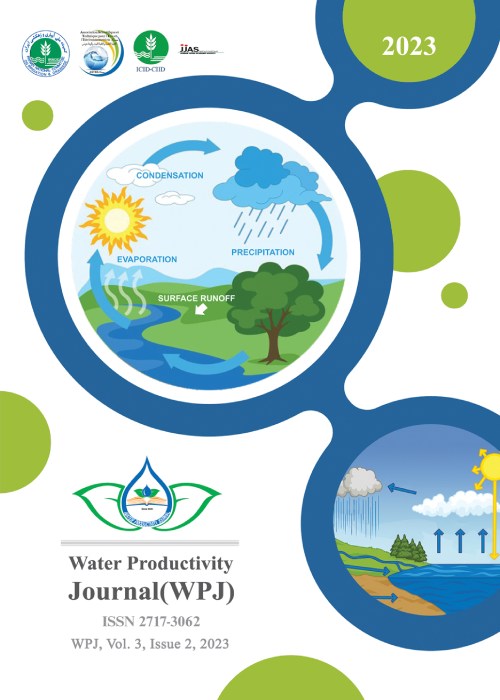Evaluation of monthly drought prospect and reservoir operation rule for drought response using reservoir drought index (RDI)
Author(s):
Article Type:
Research/Original Article (بدون رتبه معتبر)
Abstract:
Introduction
Recently, as climate change intensifies, the frequency and intensity of drought occurrence are increasing. Unlike floods, drought is challenging to know the beginning and end, so it is challenging to respond pre-emptively. In Korea, the vulnerability of agricultural reservoirs to disaster response is increasing due to climate change and the aging of facilities. So it is necessary to estimate an appropriate drought index to predict drought disasters and operate reservoirs that respond pre- emotively to drought.Materials and Methods
Drought can be largely classified into meteorological, agricultural, hydrological, and socioeconomic drought. Various drought indeces have been researched and developed depending on the subject field. Each drought index uses different variables according to its focus subject. In Korea, more than 17,000 reservoirs have a total effective storage capacity of 31 tons approximately and contribute more than 75% of the total agricultural water. From June to August, precipitation is stored in the reservoirs as much as possible when rainfall is concentrated. Then water is supplied from April to September, the rice paddy growth period, to ensure stable crop cultivation. Hence if the reservoir storage is sufficient, it is possible to supply stable agricultural water to cultivate even in meteorological droughts. On the other hand, if the reservoir storage is insufficient, it is difficult to respond to a drought disaster. So the management of reservoir storage is a significant factor in the efficient management of agricultural water and stable crop production. In this study, the reservoir drought index (RDI), one of the hydrological drought indeces, was estimated and utilized to predict drought. Then the pre-emptive drought response operation rule was applied. First, monthly runoff and agricultural water demand were estimated. Then the multiple regression analysis was conducted to predict reservoir storage at the beginning of the following month. The reservoir storage at the beginning of the month, monthly runoff, and monthly agricultural water demand were used as independent variables. The RDI was calculated from estimated reservoir storage and annual reservoir storage. The estimated RDI was compared to the observed RDI to verify the applicability.Results
The result of the multiple regression analysis showed above 0.65 coefficient of determination, and the RDI showed better performance because it was classified according to criteria range. In order to establish reservoir operation rules for drought response, this study conducted a survey of reservoir managers in Korea. As a result of the survey, the main factors influencing the suspension of reservoir water supply were rainfall, rainfall forecast, and reservoir storage rate. For the reservoir operation for drought response, the existing criteria of reservoir managers for stopping the supply of reservoir water were used. The agricultural water demand was always supplied considering the gross water requirement estimated by the Penman-Monteith equation when there were no suspension factors in the irrigation period. The result of the reservoir operation rules for drought response was evaluated by comparison to the result of reservoir operation according to theoretical water requirements.Conclusions
In this research, a regression analysis was performed to predict the reservoir storage of the first day of the following month during the irrigation period using the reservoir storage, monthly inflow, and monthly water supply. Through this, the reservoir drought index, RDI, for the next month was estimated, and drought prospect was carried out. Despite the lack of collected monthly reservoir data, the prediction of the reservoir storage showed good performance, and the drought prospect through the RDI showed a higher accuracy than reservoir storage because it was performed by classifying the RDI values within a certain range into the same drought severity. For some RDI values, a lower level of drought prospect was shown compared to the actual drought severity. However, it might be supplemented considering the safety rate of the predicted RDI. So, it is thought that a drought prospect will be effective. However, the monthly inflow and supply for regression analysis were calculated assuming that future weather data are accessible. So the correct drought prospect can be expected when accurate forecast weather data are available. In addition, this study analyzed the factors that current reservoir managers in Korea to decide when to stop supplying water through a survey. Based on this, the reservoir operation rule for response to drought (ROD) was established. The effect of ROD was analyzed by comparing the results of reservoir operation by theoretical agricultural water requirement (TOM).Keywords:
Language:
English
Published:
Water Productivity Journal, Volume:3 Issue: 2, Spring 2023
Pages:
87 to 100
https://www.magiran.com/p2705811


